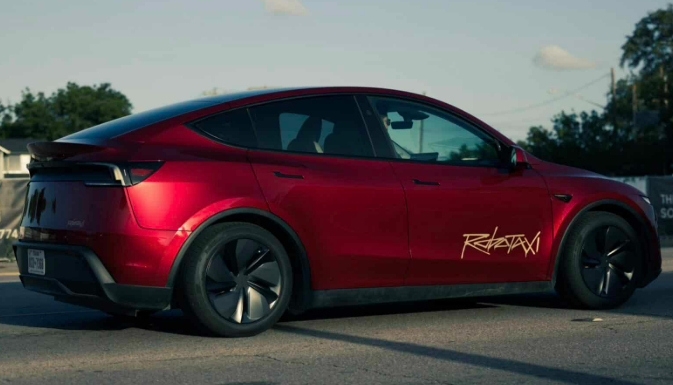Introduction: A Driverless Showdown in the Making
Elon Musk’s vision of fully autonomous Tesla Robotaxis has long intrigued the auto and tech industries. Now, with Tesla’s robotaxis preparing to launch “in a month or two” in San Francisco, Musk’s promise inches closer to reality—and it’s gunning straight for Waymo’s turf.
This bold move pits two of the most advanced autonomous systems in a direct face-off in one of the world’s most complex urban driving environments. But how does Tesla plan to dominate a city where Waymo already has a firm grip?
Tesla’s Robotaxi Vision: Fully Autonomous, No Steering Wheel
Musk’s vision for Tesla’s robotaxi is not just evolutionary—it’s revolutionary. These cars are expected to be:
- Completely driverless
- Built without a steering wheel or pedals
- Designed as part of Tesla’s future mobility network
Tesla aims to use its in-house AI and Full Self-Driving (FSD) tech to leapfrog over competitors by creating a scalable fleet that could generate income for Tesla owners and disrupt ride-hailing as we know it.
Why San Francisco? The Urban Jungle Testbed
San Francisco, with its steep hills, dense traffic, and erratic drivers, is arguably the ultimate proving ground for autonomous vehicles.
Waymo has already launched limited public services there, but Tesla’s approach will differ drastically:
- No HD maps (Tesla uses AI-based real-time vision)
- Faster iteration due to over-the-air updates
- A massive fleet of beta testers providing real-world data
San Francisco is more than a battleground—it’s the launchpad for Tesla’s global autonomous strategy.
Tesla vs Waymo: Different Philosophies, Same Goal
While Waymo relies on lidar, pre-mapped routes, and limited geofenced zones, Tesla’s robotaxi fleet will:
- Use camera-based vision systems (Tesla Vision)
- Navigate via neural network-driven real-time learning
- Attempt Level 4 autonomy without lidar or radar
This makes Tesla’s approach riskier—but also potentially more scalable.
“In a month or two,” Musk said at a shareholder meeting, “our robotaxi will be on the road.
Top Features of Tesla Robotaxis
Here are 7 standout features expected in the new Tesla Robotaxi platform:
- No human driver or driving controls
- AI-powered driving decisions via Tesla Dojo supercomputer
- Fleet sharing through Tesla’s ride-hailing app
- Auto-charging & summoning features
- Real-time hazard prediction
- Cabin designed for comfort and entertainment
- Increased safety via 360-degree vision and redundancy
These features set Tesla apart from legacy and startup players alike.
Launch Timeline: What Musk Actually Said
At Tesla’s most recent shareholder meeting, Musk dropped a bombshell:
“We’re expecting to launch our first operational robotaxis in San Francisco in a month or two.”
This suggests either a fleet retrofit of current Model 3/Y units or the possible debut of the long-teased dedicated robotaxi vehicle, expected to be revealed August 8, 2025.
Legal and Regulatory Challenges Ahead
While Tesla is ready to roll, the California Public Utilities Commission (CPUC) and NHTSA still need to approve expanded robotaxi operations.
Waymo and Cruise previously faced protests and public backlash—Tesla’s arrival may ignite another wave of public scrutiny, especially regarding:
- Accident accountability
- Pedestrian safety
- Union labor concerns in ride-hailing
Still, Musk remains confident the system is “orders of magnitude” safer than human driving.
The Bigger Picture: Tesla’s Global Robotaxi Plan
This isn’t just about San Francisco. Tesla plans to scale robotaxis globally, monetizing autonomy through:
- A ride-sharing app akin to Uber
- Revenue-sharing with vehicle owners
- Deployment in cities with advanced EV infrastructure
Robotaxis could potentially generate $30,000+ in annual revenue per vehicle, according to Musk—turning every Tesla into an income-producing asset.
Conclusion: San Francisco Is Just the Beginning
Tesla’s bold move into Waymo territory isn’t just a test—it’s the start of a revolution. If successful, Tesla’s robotaxis could:
- Reshape public transportation
- Disrupt the gig economy
- Accelerate EV adoption at an unprecedented scale
With Tesla’s unique tech stack, vast fleet, and Musk’s relentless push, San Francisco could be the first domino in a global driverless future.
Frequently Asked Questions (FAQs)
Q1: When will Tesla Robotaxis launch in San Francisco?
According to Elon Musk, Tesla plans to launch its robotaxi service in San Francisco within a month or two, as of July 2025.
Q2: How do Tesla Robotaxis differ from Waymo?
Tesla uses a vision-only approach powered by AI and neural nets, while Waymo relies on lidar, HD maps, and geofenced zones for navigation.
Q3: Will Tesla Robotaxis be available to the public immediately?
Initial access may be limited to select testers or Tesla owners, with wider rollout dependent on regulatory approval in California.

